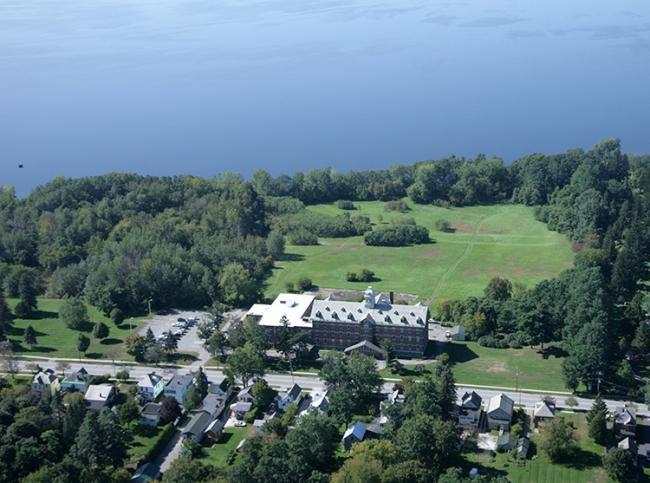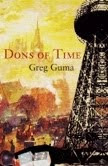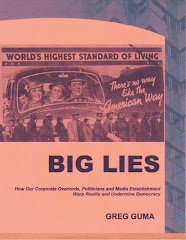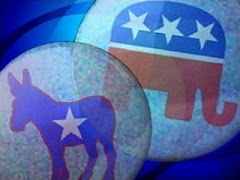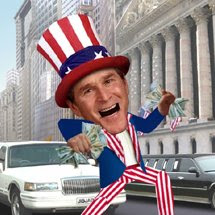Philosopher Jacques Ellul argues that bureaucratic law rests on three basic principles:
1. Continuity and Stability: The idea is that personnel comes and goes, but "administration" remains basically the same. Beyond any changes there is a constant structure, a continuity of tradition that sustains administrative power.
2. Specialization and Rationalization: Bureaucracy exists in order to function, to make the existing political-economic system advance as a whole. It doesn't promote any particular truths and can't often consider the needs of specific individuals. It obeys a single basic rule – efficiency. There is no central leadership. Each person is actively restricted to making his or her own unit function, preferably without crisis or work stoppage. There's little interest in or incentive for knowing the whole.
3. Anonymity and Secrecy: Leaders give only general instructions, usually not concrete and therefore not requiring specific actions. Ultimately, decisions become independent of individual responsibility.
 |
| Congressional Maze/GG |
In Nixon's case, the tactic also became a factor in his ultimate ouster. Like most politicians, he lacked much technical competence. Despite his preoccupation with strong-arm tactics, bugging “enemies,” and recording himself, he couldn't gain and maintain control of information. In the end, it undid him. What Nixon might have tried instead was to refine the methods in order to make government bureaucracy more effective and contribute to its "progressive autonomy."
One move in that direction was revenue sharing, which shifted control over federal funds filtered to the local level. Categorical grants to diverse groups, many of them essentially unfamiliar to the central bureaucracy, were less manageable than "block grants" to state and local governments. But revenue sharing didn't really decentralize decision-making. Instead, decisions were turned over to politicians and their appointees, who were forced by their own lack of information to depend on the bureaucrats who managed the information.
Elections create the impression that political channels are open to every citizen. This is the essence of the "political illusion," a belief that meaningful participation is possible in a bureaucratic state – that bureaucracy can be controlled democracy. Electronic and print media perpetuate this illusion, reinforcing conformity while emphasizing the political spectacle.
Even investigations of scandals like Watergate and Iran-Contra have promoted an illusion that decisions rest in public hands. At the time most people assume that their opinions about official malfeasance, expressed in opinion polls and letters, represent input in a democratic process. But the officials under scrutiny are just part of a public spectacle, behind which the true structure of the State bureaucracy remains obscure and out of control. Distracted by the flow of daily "facts," dissociated bits of data that reveal little of the "hidden agenda," people are discouraged from looking deeper.
Legislatures and parliaments no longer do much more than endorse decisions that have been vetted and negotiated by experts and pressure groups. The experts themselves are mostly "organization men," citizens of the expanding State.
Pressure groups have also expanded their reach. Huge non-government organizations and labor unions have swallowed smaller independent associations. The remaining rivals struggle to claim status as representatives of prime constituencies. At the same time, transnational corporations gobble up each other, building empires that make the trusts of the 19th century look quaint. Newer conglomerates cross industrial lines and often include hundreds of product lines, across every phase of the production process.
Like good bureaucrats, the managers of multinationals claim that the need to grow is based on efficiency, which will profit the corporation and "benefit society as a whole." Bigness is essential and necessary, they say, to research, develop and market new products and technologies. Despite the persuasive evidence challenging this view, the idea that bigger is better – more efficient, not to mention more healthy and sustainable remains a widely held and generally unexamined belief.
Conglomerates are efficient in at least two areas: generating profits and satisfying the short-term security and self-esteem needs of some employees. The corporate approach stresses minimal satisfaction and attractive fringe benefits for "loyal" workers, high payoffs for key executives, and profitable investments for stockholders. Everyone wins, goes the corporate wisdom – except the consumer and society.
These huge systems are the vanguard of a new form of organization – rational collectives. In this case, the term collective doesn't mean equal division of assets but rather refers to an organizational mentality marked by bureaucratic order, the impersonal rule of efficiency and the "market," and, despite the interchangeability of people and smaller businesses, extreme rigidity.
This preference for the collective, at the expense of the individual, has affected not only corporations and the legislative branch of governments but also the legal system. In the US, the Supreme Court has gradually expanded the realm of collective rights, building on the "equality" standard that began to emerge in the 1950s, while narrowing the scope of individual rights. Although equal protection under the law is often stressed, individual rights to privacy, speech, and personal security have been undermined in a series of decisions. The Court has nudged the country toward a flat compartment-less society, perhaps less arbitrary in how people are classified but more arbitrary in the way all people are treated.
Taken together, government, business, interest groups and the courts are promoting a process of progressive collectivization. At one time "organized" society may have provided solutions to specific crises. By the early 20th century, however, social rigidification was already well advanced. In the latter half of the last century control moved to the national, then the global level.
In 1902, Lincoln Steffens, the muckraking journalist, said that the "shame of the cities" was crooked politicians and businessmen who attempted to manage the American people. The solution of his era was federal action to rescue the states. But the answer became the problem.
Planners nevertheless look toward escalation. If the remedy for local failure is federal control, they assume, the answer to the disputes of nation-states must be some form of World Order.
This is Part 23 of Prisoners of the Real
To read other chapters, go to Prisoners of the Real: An Odyssey



